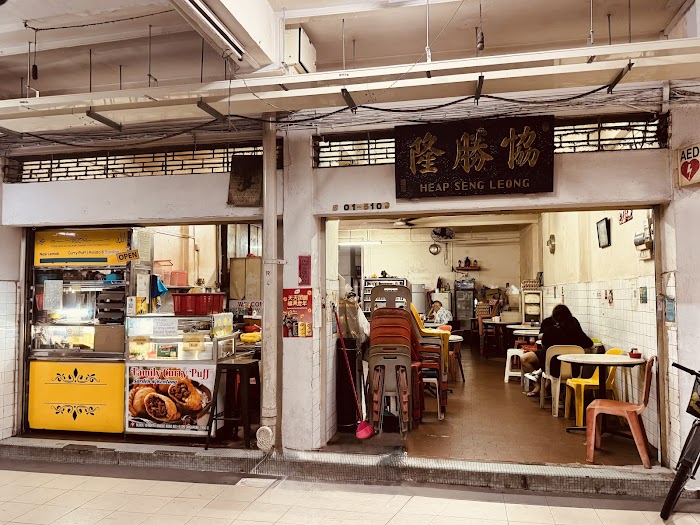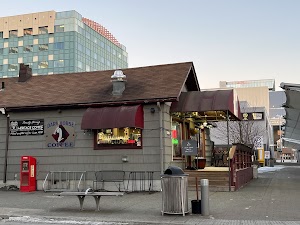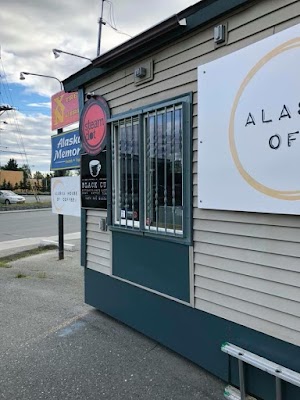Of course. Here is a 1500-word article based on the provided source content, enhanced with objective analysis, SEO-optimized structure, and engaging language.
Heap Seng Leong Coffeeshop: A Taste of Nostalgia and Singapore’s Best Butter Kopi?
In a city-state defined by relentless progress, where gleaming skyscrapers pierce the clouds and futuristic gardens bloom, there exist precious, unvarnished pockets of the past. These are places that have resisted the pull of modernity, serving not just food and drink, but a powerful dose of nostalgia. Tucked away in an unassuming HDB block at North Bridge Road, Heap Seng Leong Coffeeshop is perhaps one of Singapore’s most authentic and cherished time capsules.
For the uninitiated, it may look like just another old coffee shop. But for those in the know—a mix of loyal elderly patrons, curious young Singaporeans, and international travelers—it represents something far more profound. It is a living museum, a portal to the Singapore of the 1960s and 70s, and home to a legendary brew that can convert even the most ardent coffee-hater: the Kopi Gu You, or Butter Coffee.
This article delves deep into the experience of Heap Seng Leong, synthesizing firsthand accounts with objective analysis to determine what makes this humble establishment an enduring icon. Is it truly the best traditional breakfast in Singapore, or is its appeal rooted more in atmosphere than in flavour?
Step into a Time Capsule: The Unmistakable Ambiance
The moment you step into Heap Seng Leong, the sensory shift is immediate. The hum of the city fades, replaced by the gentle clatter of porcelain cups, the low murmur of conversations in Hokkien and Mandarin, and the rhythmic scraping of toast. The air is thick with the rich, slightly smoky aroma of coffee beans being brewed the old-fashioned way and the unmistakable scent of charcoal embers.
The decor, or lack thereof, is a key part of its charm. There are no Edison bulbs, no reclaimed wood, and no minimalist aesthetics here. Instead, you’ll find green and white tiled walls, well-worn marble-topped tables, and simple wooden chairs that have supported generations of customers. A faded calendar might hang askew on the wall, and the proprietors—a pair of elderly uncles, often seen in singlets and shorts—move with a practiced, unhurried grace.
As one visitor, UPSTREAMZ Ltd, aptly puts it, “this place has an old nostalgic feel going back to the early 60s of Singapore in the olden times.” It’s an environment that hasn’t been curated for Instagram; it simply is. This authenticity is its greatest strength. In a world of manufactured experiences, Heap Seng Leong offers a genuine glimpse into the soul of a bygone era, a stark and welcome contrast to the polished perfection of modern Singapore.
The Star of the Show: The Legendary ‘Kopi Gu You’ (Butter Coffee)
While the atmosphere draws you in, it’s the coffee that often seals the deal. Heap Seng Leong is one of the last remaining places in Singapore that serves Kopi Gu You, or Butter Coffee. This isn’t a modern bulletproof coffee; it’s a traditional Hainanese technique. A slice of unsalted butter is dropped into the hot, freshly brewed black coffee, where it melts into a golden, glossy slick on the surface.
Why Butter? An Analytical Look
The practice of adding butter to coffee originated out of practicality. In the past, coffee beans available in Southeast Asia were typically the Robusta variety—harsher, more acidic, and more bitter than their Arabica counterparts. The sock-brewing method (Nanyang Kopi) often involved roasting these beans with sugar and margarine, resulting in a dark, caramelised, and intense brew. The addition of a pat of butter served two key purposes:
- To Smooth the Flavour: The fat from the butter cuts through the acidity and bitterness of the Robusta beans, creating a remarkably smooth, rounded, and full-bodied mouthfeel. It mellows the harsh edges without diluting the coffee’s strength.
- To Add Calories: For the labourers and coolies who were the original patrons of these kopitiams, the extra fat provided a much-needed caloric boost to fuel a long day of physical work.
The result is a beverage that defies expectations. As reviewer Drew, a self-proclaimed coffee-hater, attests, “The best butter coffee I’ve ever tasted… As someone who hates coffee, I’ll gladly drink half a cup of their butter coffee. It’s that good.” The butter doesn’t make the coffee greasy; instead, it imparts a subtle savoury note and a velvety texture that complements the caramelised sweetness of the traditional brew. At just $1.20, it’s an affordable and unforgettable experience.
The Quintessential Breakfast: Toast, Eggs, and More
A cup of kopi is rarely enjoyed alone. The classic Singaporean breakfast set is a trinity of coffee, kaya toast, and soft-boiled eggs, and Heap Seng Leong executes this with time-honoured tradition.
The Charcoal-Grilled Kaya Toast
Forget modern pop-up toasters. Here, the bread is toasted over a charcoal fire. The uncles deftly place slices of traditional white loaf bread on a wire rack over glowing embers, flipping them until they are perfectly browned. This method imparts a subtle smokiness that you simply cannot replicate with an electric appliance.
The toast is then slathered with a generous layer of kaya (a sweet, fragrant coconut and egg jam) and finished with thick slabs of cold butter that melt slowly into the warm bread. The result, as described by visitors, is “simple yet incredibly satisfying.” However, it’s worth noting the differing opinions. While many rave about it, local reviewer C T found the toast “quite ordinary” and preferred it crispier. This highlights a key point: perfection here is subjective and tied to personal nostalgia and preference. For some, the slightly softer, fluffier texture of charcoal-grilled bread is the authentic ideal; for others, a modern, crunchier toast is superior.
The Perfect Soft-Boiled Eggs
The soft-boiled eggs are another cornerstone of the experience. Served in a cup, they are cooked to a perfect consistency—the whites are barely set, and the yolks are a runny, golden liquid. The traditional way to eat them is to crack them into a saucer, add a dash of dark soy sauce and a sprinkle of white pepper, and mix it all into a savoury custard. It’s the ultimate comfort food, perfect for dipping your kaya toast into.
Hidden Gems: The Curry Puff
Beyond the standard set, Heap Seng Leong offers other simple delights. Reviewer Tan Lewis recommends the curry puff, praising it as “hot and crispy.” This savoury pastry, filled with a spiced potato and chicken mixture, provides a wonderful contrast to the sweet kaya toast and is a perfect accompaniment for an afternoon teh (tea).
An Honest Assessment: Is Heap Seng Leong for Everyone?
With a high rating of 4.3 from nearly 2,000 reviews, the consensus is overwhelmingly positive. However, to provide a truly credible and objective analysis, it’s essential to manage expectations and acknowledge that this unique experience may not appeal to everyone.
The Local vs. Tourist Perspective
An interesting point of analysis arises from contrasting reviews. Tourists and younger Singaporeans, like mazaya, often describe the experience as “local” and “authentic,” awarding it five stars for the nostalgic atmosphere and warm service. Conversely, local reviewer C T, while acknowledging the “local vibe,” found the food and drinks “nothing special” and felt the place “feels more catered to tourists who like to experience” the old ways.
This isn’t a contradiction but rather a difference in perspective. For a visitor, Heap Seng Leong is a rare and exciting discovery. For a local who may have grown up with similar kopitiams, the food itself might seem standard. The value, therefore, is in the eye of the beholder. Its magic lies not just in the objective quality of its toast, but in its ability to transport you. For those who didn’t live through that era, it’s a precious educational and cultural experience.
Practical Considerations and Managing Expectations
Visitors should be prepared for the realities of a 1960s-era establishment.
- Comfort: As Drew notes, “the place is a little stuffy.” There is no air-conditioning, only ceiling fans that stir the warm, humid air.
- Space: It’s a small and often crowded space. Reviewer Tan Lewis correctly points out that for “family with prams would be a challenge.” Getting a table during peak morning hours, especially on weekends, can be difficult.
- Service Style: The service is efficient and, for the most part, friendly. The uncles are often described as “warm,” “welcoming,” and happy to give recommendations. However, another reviewer tempers this by saying the staff “may not be friendly but harmless.” This is typical of old-school establishments where brisk efficiency can sometimes be mistaken for curtness. Don’t expect fawning service; expect experienced hands working quickly to serve a crowd.
Your Guide to Visiting Heap Seng Leong
Thinking of making the pilgrimage? Here’s what you need to know.
Location and Getting There:
Heap Seng Leong is located at Block 10 North Bridge Road, #01-5109, Singapore 190010. It’s situated under an HDB block, facing a large public car park, which Tan Lewis notes has “ample parking space.” The nearest MRT stations are Lavender (East-West Line) and Jalan Besar (Downtown Line), both about a 10-15 minute walk away.
Best Time to Go:
The coffeeshop is busiest during the morning breakfast rush (around 8 AM to 10 AM), especially on weekends. To avoid the crowds and enjoy a more leisurely experience, consider visiting on a weekday or during the off-peak afternoon hours for a tea break.
What to Order for the Full Experience:
- Kopi Gu You (Butter Coffee): An absolute must-try, even if you don’t typically drink coffee.
- Kaya Butter Toast Set: This includes the charcoal-grilled toast and soft-boiled eggs.
- Curry Puff: If you’re still feeling peckish, this is a highly recommended savoury snack.
The Verdict: A Cherished Relic, Not a Tourist Trap
So, what is the final verdict on Heap Seng Leong? It is far from a tourist trap. A trap implies inauthenticity and exploitation, two things this establishment could never be accused of. With coffee at $1.20 and toast for under $2, the prices are, as one reviewer states, “really reasonable given now everything also increases.”
Heap Seng Leong’s immense value lies in its dual role as both a purveyor of traditional breakfast and a guardian of intangible cultural heritage. While the flavours may be “ordinary” to some, the experience is anything but. It is a place where time slows down, where you can witness history not in a glass case, but alive and breathing, serving you coffee with a pat of butter. It is a testament to the idea that some things are best left untouched by the relentless march of time. For a simple, affordable, and profoundly authentic taste of old Singapore, there is hardly a better place to be.



